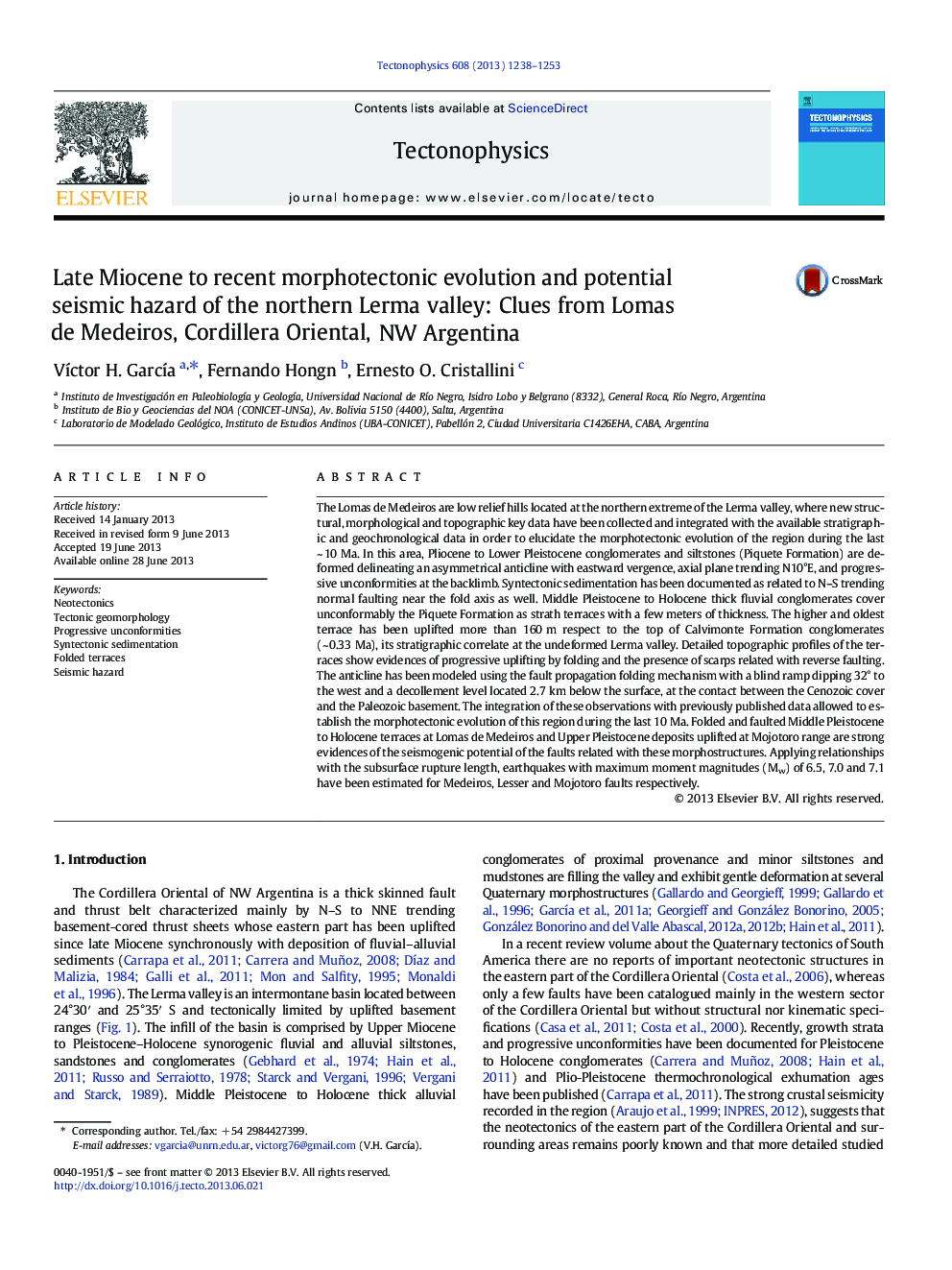| Article ID | Journal | Published Year | Pages | File Type |
|---|---|---|---|---|
| 6434059 | Tectonophysics | 2013 | 16 Pages |
â¢New key structural and morphological data were collected at Lomas de Medeiros.â¢Middle Pleistocene to Holocene folded river terraces are evidences of neotectonics.â¢Six stages of morphotectonic evolution have been determined for the last ~ 10 Ma.â¢Mean uplift and shortening rates were established for each morphostructure.â¢Maximum potential earthquakes of Mw between 6.5 and 7.1 were estimated.
The Lomas de Medeiros are low relief hills located at the northern extreme of the Lerma valley, where new structural, morphological and topographic key data have been collected and integrated with the available stratigraphic and geochronological data in order to elucidate the morphotectonic evolution of the region during the last ~ 10 Ma. In this area, Pliocene to Lower Pleistocene conglomerates and siltstones (Piquete Formation) are deformed delineating an asymmetrical anticline with eastward vergence, axial plane trending N10°E, and progressive unconformities at the backlimb. Syntectonic sedimentation has been documented as related to N-S trending normal faulting near the fold axis as well. Middle Pleistocene to Holocene thick fluvial conglomerates cover unconformably the Piquete Formation as strath terraces with a few meters of thickness. The higher and oldest terrace has been uplifted more than 160 m respect to the top of Calvimonte Formation conglomerates (~ 0.33 Ma), its stratigraphic correlate at the undeformed Lerma valley. Detailed topographic profiles of the terraces show evidences of progressive uplifting by folding and the presence of scarps related with reverse faulting. The anticline has been modeled using the fault propagation folding mechanism with a blind ramp dipping 32° to the west and a decollement level located 2.7 km below the surface, at the contact between the Cenozoic cover and the Paleozoic basement. The integration of these observations with previously published data allowed to establish the morphotectonic evolution of this region during the last 10 Ma. Folded and faulted Middle Pleistocene to Holocene terraces at Lomas de Medeiros and Upper Pleistocene deposits uplifted at Mojotoro range are strong evidences of the seismogenic potential of the faults related with these morphostructures. Applying relationships with the subsurface rupture length, earthquakes with maximum moment magnitudes (Mw) of 6.5, 7.0 and 7.1 have been estimated for Medeiros, Lesser and Mojotoro faults respectively.
